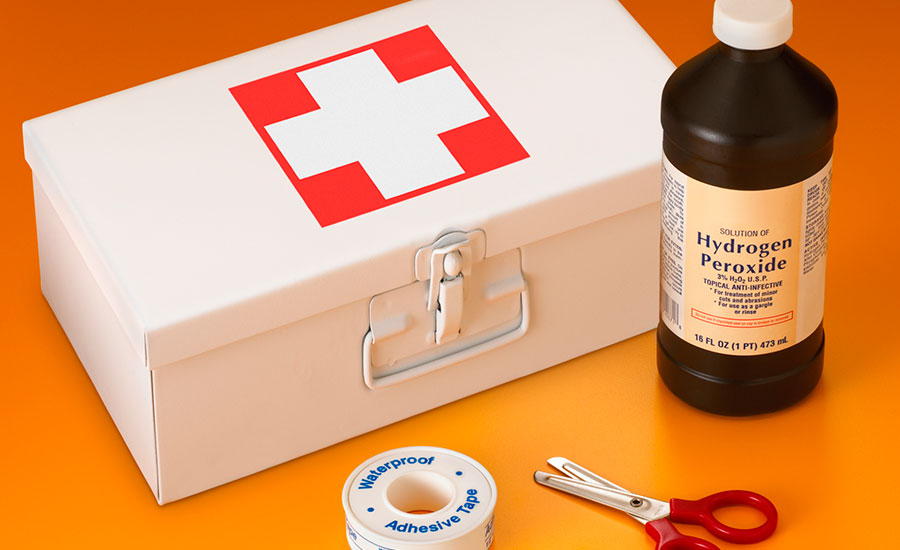First aid guidelines get an update

The American Red Cross and American Heart Association announced changes to guidelines for administering first aid. Among the most noteworthy revisions are new and updated recommendations for the treatment of bleeding; recognition of stroke; recovery position; anaphylaxis (severe allergic reaction) and treatment of hypoglycemia (low blood sugar) in diabetics.
Volunteer experts from 14 national and international organizations joined the Red Cross and the American Heart Association in reviewing 22 separate first aid questions. Experts analyzed the science behind each question and worked to reach consensus on related treatment recommendations with the goal of reducing morbidity and mortality due to emergency events. Last updated in 2010, these recommendations form the recognized scientific basis for most first aid training around the world.
“First aid can be initiated by anyone in any situation, and our responsibility as experts is to designate assessments and interventions that are medically sound and based on scientific evidence or expert consensus. Knowing the correct steps to take in those critical first moments of an emergency can mean the difference between life and death” said Eunice “Nici” Singletary, M.D., co-chair of the International Liaison Committee on Resuscitation (ILCOR) First Aid Task Force and chair of the First Aid Guidelines writing group. Singletary also serves as chair of the American Red Cross Scientific Advisory Council’s First Aid Subcouncil.
“The 2015 First Aid Guidelines reaffirm previous recommendations and highlight ways we can help save more lives from illness and injury,” said Clifton Callaway, M.D., Ph.D., chair of the AHA’s Emergency Cardiovascular Care committee and professor of emergency medicine at the University of Pittsburgh. “Anyone can provide first aid, and everyone should. The Guidelines integrate the latest science to create evidence-based recommendations for training and preparation. Everyone should learn how to initiate first aid and act quickly when it is needed.”
Bleeding updates: The revised guidelines stress the importance of stopping severe bleeding as a critical first aid skill. Almost all bleeding can be controlled by steady, direct, manual pressure, with or without a gauze or cloth dressing over the wound. The guidelines recommend pressing hard and holding steady pressure for at least five minutes without lifting dressings to see if the bleeding has stopped. While direct pressure is still the first line of defense, the guidelines acknowledge the important role tourniquets and hemostatic agents play in stopping life-threatening bleeding when standard measures fail or are not possible. Tools now available and recommended to first aid providers include tourniquets for severe bleeding on a leg or arm. For open wounds not on an extremity, the guidelines suggest use of a hemostatic dressing, which is coated with a special agent to enhance clotting and help stop bleeding when correctly applied and combined with direct pressure. Hemostatic dressings are readily available online and at pharmacies.
Hypoglycemia in diabetics: Early treatment of hypoglycemia (low blood sugar) while the patient is still conscious and still able to follow instructions can prevent progression to more serious hypoglycemia that would require more advanced treatment. To avoid lay responders from giving too much or too little sugar, the new guidelines recommend use of glucose tablets purchased at a retail pharmacy. Glucose tablets have been shown to be more effective at resolving symptoms of hypoglycemia than dietary forms of sugar. If glucose tablets are not available, food sources such as sucrose candies, dried fruit, or orange juice can still be used.
Recovery position: If the person is unresponsive and breathing normally, without any suspected spine, hip or pelvis injury, turn the victim to a lateral side-lying position. Studies show some respiratory improvement in this position compared to a supine, or faceup, position. In addition to the change from the supine position, the modified HAINES position is no longer recommended due to lack of scientific evidence.
Anaphylaxis: Under the revised guidelines for treating anaphylaxis (severe allergic reaction), if symptoms persist beyond the initial dose and arrival of advanced care will exceed 5-10 minutes, the first aid provider may give a second epinephrine injection from a prescribed auto-injector.
Recognition of stroke: Approximately 800,000 Americans have a stroke each year, leaving them at risk for long-term disability. Early recognition of stroke through the use of a stroke assessment system decreases the interval between the time that the incident occurs and the time it takes for that person to arrive at a hospital and receive specific treatment. This faster time to treatment may reduce the damage and disability from a stroke. This is the first time that the guidelines have examined the science behind inclusion of a stroke identification system into all first aid courses.
Use of aspirin with heart attacks: The updated guidelines clarify that aspirin should be used when helping someone suspected of having a heart attack, characterized by symptoms such as chest pain accompanied by nausea, sweating and pain in the arm and back. If the first aid provider is unclear on whether this is a heart attack or simply someone experiencing non-cardiac related chest pain or discomfort, then aspirin should not be given. Additionally, the updated guidelines emphasize that there is no need to distinguish between enteric versus non-enteric coated aspirin as long as the aspirin is chewed and swallowed.
Looking for a reprint of this article?
From high-res PDFs to custom plaques, order your copy today!





